Elon Musk outlines Mars colony vision
- Published
- comments
Elon Musk: Ticket to Mars human colony should be affordable
Entrepreneur Elon Musk has outlined his vision for establishing a human colony on Mars for people that can afford a $200,000 ticket price.
Mr Musk, who founded private spaceflight company SpaceX, was speaking at the International Astronautical Congress (IAC), external in Guadalajara, Mexico, on Tuesday.
His colonisation plan, external uses a fully reusable transportation system that would take 100 people and 80 days to get to Mars and eventually as little as 30 days.
This transportation system consists of a spaceship that is refuelled with methane and oxygen in Earth orbit and also on Mars after landing there.
Mr Musk explained that to achieve the $200,000 price, the entire transportation system, external has to be reusable.
He spoke of a colony of a million people to make it self-sustaining and that, with his plan, that could take 100 years.
Entrepreneur Elon Musk has outlined his vision for getting to Mars.
To reach a million, Mr Musk said: "I want to make Mars seem possible, something we can do in our life times… and that anyone can go if they wanted to."
The first Mars flight could take place in 2022, according to SpaceX's timeline for Mars colonisation.
Mr Musk said that he would like to name the first spacecraft that goes to Mars, The Heart of Gold, after a starship in Douglas Adams' book, The Hitchhiker's Guide to the Galaxy.
The launch site will be Nasa's Kennedy Space Centre pad 39, from where the Apollo Moon missions flew.
The reason why Mr Musk wants to go to Mars is, he said: "Without someone with a real ideological commitment, it didn't seem we were on any trajectory to become a spacefaring civilisation."
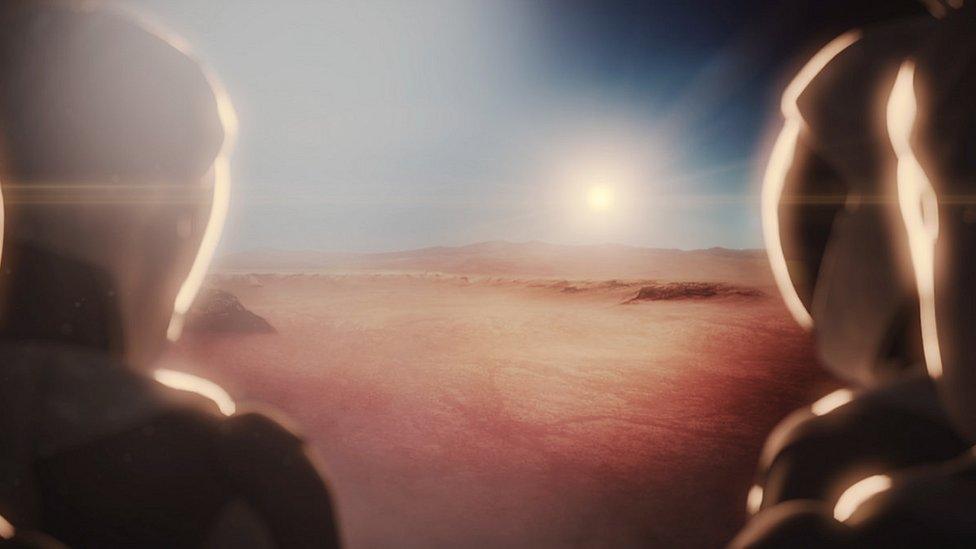
A colony of a million people could take 100 years to establish
The prototype spaceship is planned to make test flights in four years, initially going into space, but not into orbit.
At the weekend, Mr Musk announced that SpaceX had carried out its first test of the Raptor rocket engine that will power the spaceship and the booster that puts it into orbit.
A prototype booster fuel tank has been built and tested and Mr Musk showed a picture of the enormous tank with staff standing next to it.
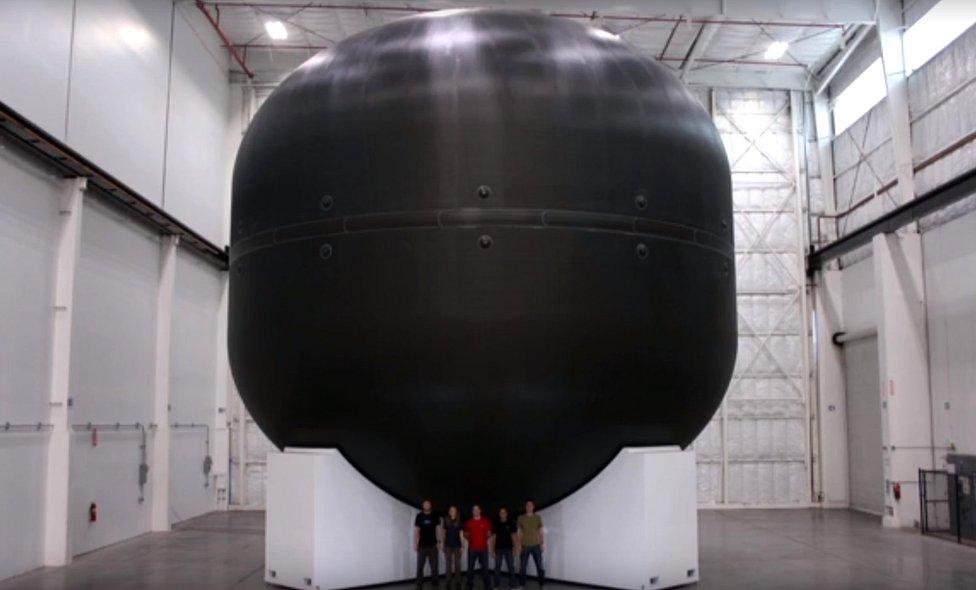
SpaceX has built a huge prototype booster fuel tank
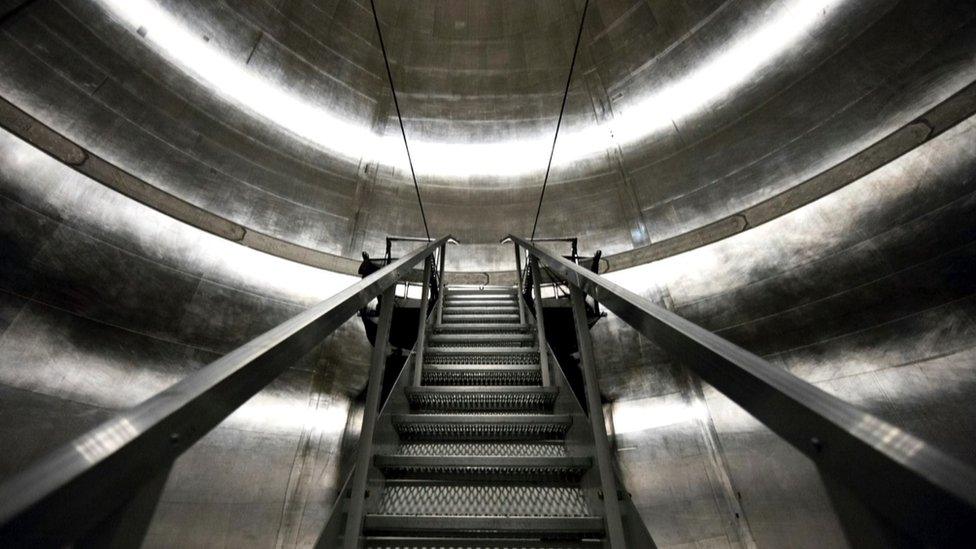
This photo from Mr Musk's talk shows the prototype tank from the inside
The combination of the booster and spaceship is called the Interplanetary Transportation System (ITS) and together they stand 122 metres tall, bigger than an Apollo-era Moon programme Saturn V rocket.
The booster will have 42 Raptor engines. Arranged in concentric circles, there will be an outer circle of 24 engines, an inner circle of 14 and in the centre seven Raptors.
Future versions of the ITS could be larger to accommodate bigger spaceships with up to 200 passengers.
The spaceship will have nine Raptor engines, carry 450 tonnes of people and cargo and have an open plan "occupant compartment" for colonists, according to Mr Musk.
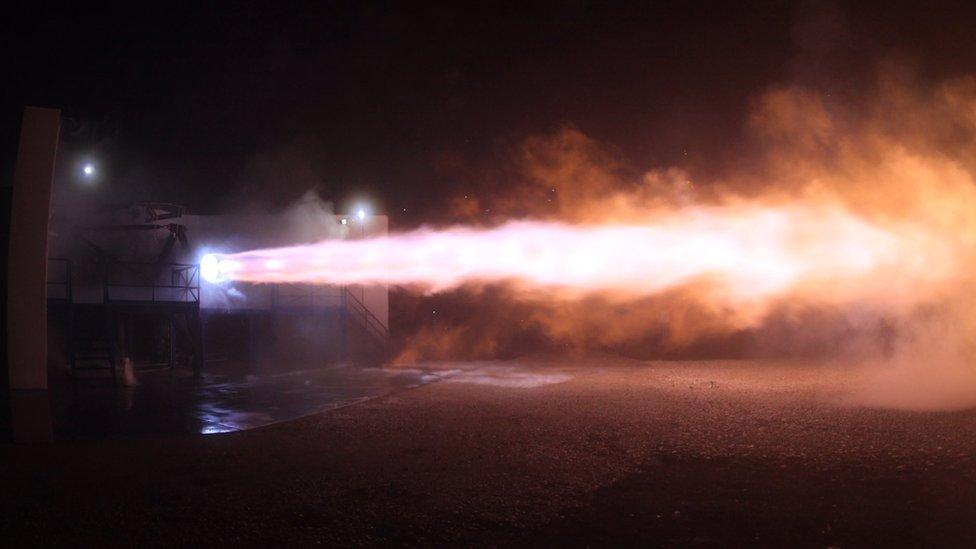
Mr Musk said the Raptor engine had been fired at a test facility in Texas
He envisages communal living during the eighty-day trip with movies and lectures and zero gravity games.
The ITS' development will be funded by profit from SpaceX, Mr Musk's own wealth. He sees the colonisation of Mars as a "huge public private partnership", and said, "that is how the United States was established".
Spaceships would be sent every two years when Mars is closest to Earth and the two worlds will be 57.6 million kilometres apart in 2018.
At their furthest, they can be 400 million kilometres apart and in the past they have only been as close as 100 million kilometres.
Once it reaches Mars, the spaceship is shaped so that it will naturally be decelerated as it passes through the atmosphere. Its engines will then fire to slow it down to land vertically on legs, like SpaceX's Falcon 9 rocket does today.
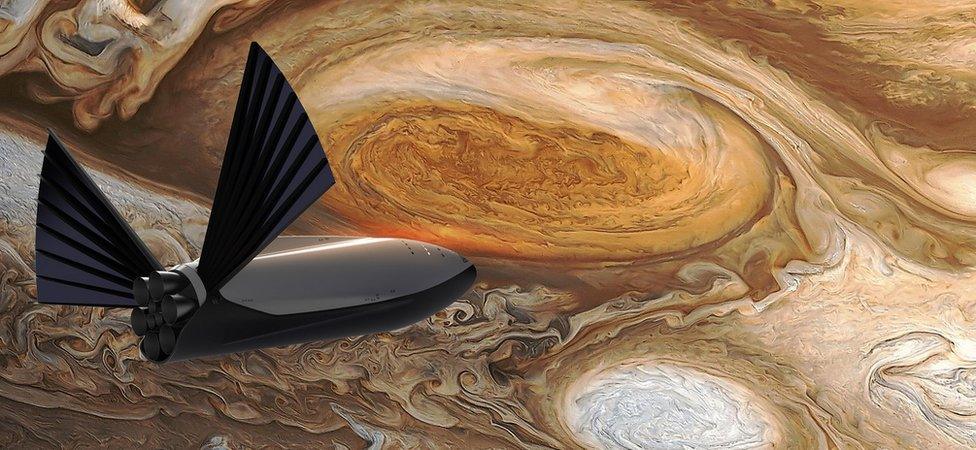
The SpaceX founder wants to open up access to the whole of the "Greater Solar System"
Mr Musk outlined a future where 1,000 spaceships could be in orbit. "The Mars colonial fleet would depart en masse." He expected a spaceship to last 12-15 flights.
The price could eventually come down to $100,000 to $140,000. If someone wanted to return to Earth they could take a returning spaceship, "for free", Mr Musk commented.
SpaceX also plans to launch the spacecraft it calls Red Dragon to Mars in a couple of years when the Earth and Mars are closest.
Red Dragon is a version of SpaceX's Dragon spacecraft that is carrying cargo to the International Space Station, and a human version is being developed for astronauts.
SpaceX will offer the Red Dragon flights to governments and private organisations to send scientific and commercial payloads to the Red Planet.